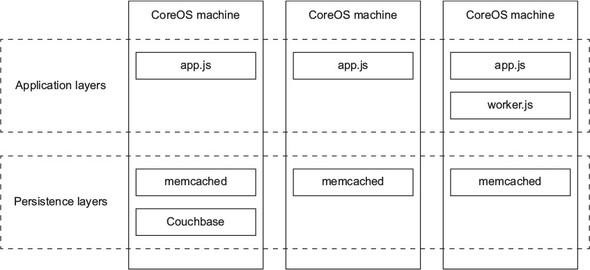Chapter 6. Web stack application example
This chapter covers
- Deploying a multitier web application to a CoreOS cluster
- Applying autodiscovery systems in application logic and service unit files
- Testing failover of discrete layers
In this chapter, you’ll begin fleshing out a full application stack on CoreOS. This isn’t an application development book, so the example is a bit contrived, but it’s similar to any complex stack you might see that contains a number of different services with different purposes. This example will develop the information you’ve already learned about CoreOS into a more real-world scenario. The application you’ll build and deploy will be iterated on throughout the rest of the book, just as you’d expect in the real world.
- Node.js back end (app.js) running
- Express HTTP server
- Socket.IO WebSocket server
- Node.js worker process for data acquisition (worker.js)
- Memcached for the express-session store
- Couchbase as the persistent database
- React for front-end view composition
By the end of this chapter, your infrastructure on CoreOS will look like figure 6.1. You’ll have an instance of your web application (app.js) and a memcached service running on all three machines, as well as one Couchbase instance and one instance of your data-acquisition program (worker.js).
